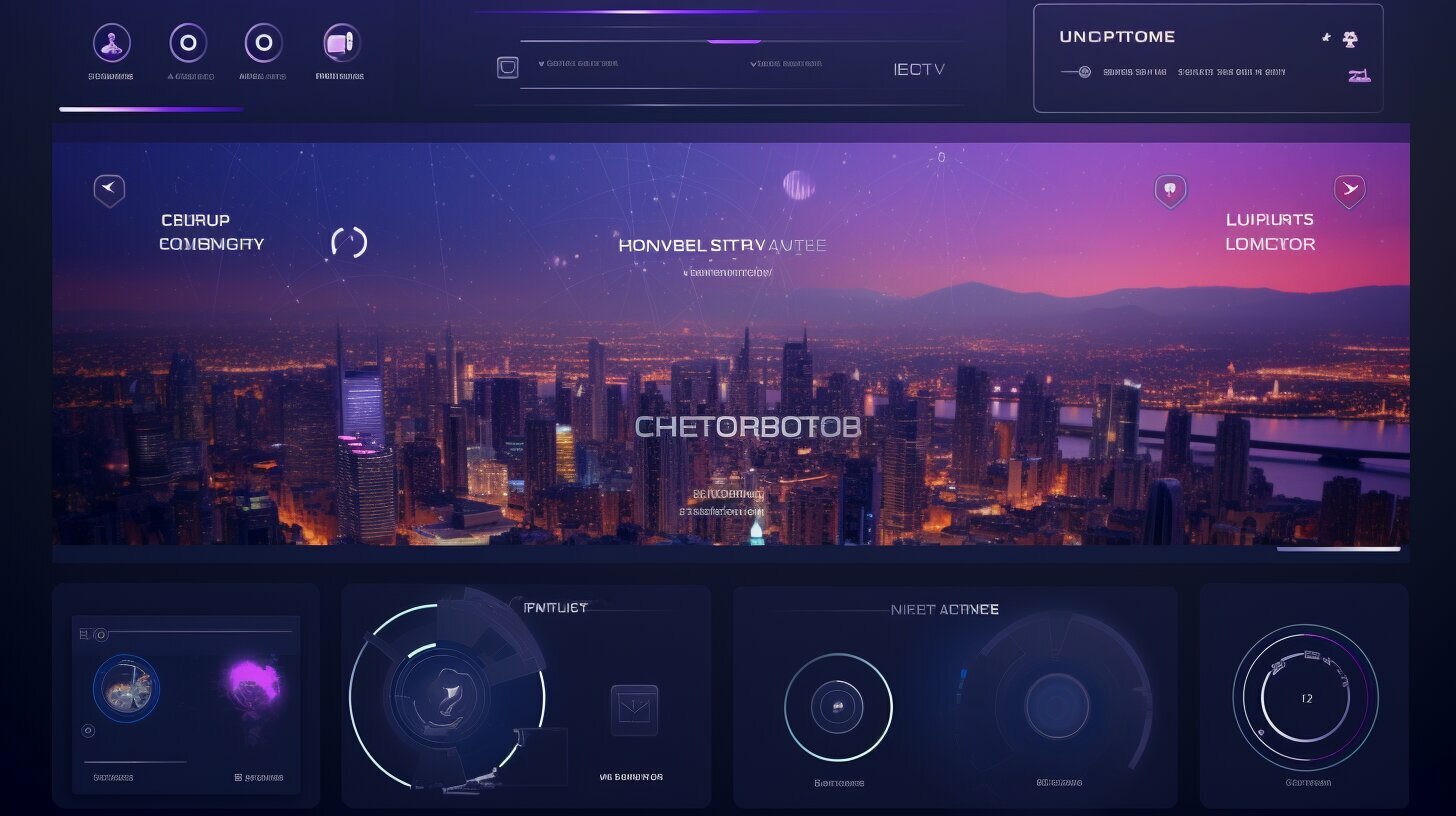Video marketing is a powerful tool that can help businesses build brand affinity and engage with their target audience. By leveraging the visual and auditory elements of video, companies can create compelling content that resonates with consumers and leaves a lasting impression. However, creating an effective video marketing strategy requires careful planning and execution.
Whether you’re a photographer looking to grow your business or a brand aiming to increase sales, understanding the key principles of video marketing is essential. That’s where the master class on creating a video marketing strategy comes in. This comprehensive course provides photographers and marketers alike with the knowledge and skills needed to leverage various platforms for video marketing.
Key Takeaways:
- Create a video strategy that aligns with your brand identity and messaging.
- Incorporate clear calls to action in your videos to guide viewers towards desired actions.
- Choose the right marketing channels for video distribution to maximize reach and engagement.
- Scale up your video strategy by considering video length, script format, and footage requirements.
- Track video analytics to measure engagement and evaluate the success of your video marketing efforts.
By implementing these key takeaways, businesses can develop a comprehensive video marketing strategy that drives brand growth, generates leads, and ultimately increases sales. Whether you’re a beginner or an experienced marketer, the master class and additional resources mentioned in this article provide valuable insights and actionable strategies for achieving success in video marketing.
The Importance of Aligning Videos with Brand Identity
In order to create a successful video marketing strategy, it is essential to align your videos with your brand identity. Your videos should reflect the values, messaging, and overall image of your brand, creating a cohesive and memorable experience for your audience. Aligning your videos with your brand identity helps to establish brand recognition and build trust with your target market.
When creating videos, consider how you can incorporate your brand elements, such as your logo, colors, and fonts, into the visuals. This consistency across your video content helps to reinforce your brand and make your videos instantly recognizable. Additionally, make sure that the tone and style of your videos match your brand’s personality. Whether your brand is playful and energetic or serious and professional, your videos should reflect that.
By aligning your videos with your brand identity, you are able to create a cohesive brand experience for your audience. This consistency helps to build brand affinity and ensures that your videos resonate with your target market. When your videos are aligned with your brand and its values, they become a powerful tool for communicating your message, connecting with your audience, and achieving your marketing goals.
| Benefits of Aligning Videos with Brand Identity: |
|---|
| 1. Establishes brand recognition |
| 2. Builds trust with your target market |
| 3. Creates a cohesive brand experience |
| 4. Reinforces your brand’s personality |
| 5. Increases the effectiveness of your video marketing strategy |
The Importance of Brand Consistency
Brand consistency is crucial in video marketing. When your videos align with your brand identity, it creates a consistent brand experience across all touchpoints, reinforcing your messaging and making your brand more memorable. Consistency also helps to establish trust and credibility with your audience, as they come to recognize and associate your brand with the content you produce.
“Aligning your videos with your brand identity helps establish brand recognition and build trust with your target market.”
Consistency in your videos should extend beyond visuals and include the tone and messaging as well. Your videos should communicate your brand’s unique value proposition and resonate with your target audience. By consistently delivering a message that aligns with your brand identity, you can create a stronger connection with your viewers and increase engagement and conversions.
Key Takeaways
- Aligning your videos with your brand identity is essential for creating a successful video marketing strategy.
- Consistency in visuals, tone, and messaging helps to establish brand recognition and build trust with your audience.
- By aligning your videos with your brand identity, you create a cohesive brand experience and increase the effectiveness of your video marketing efforts.
Remember, when developing your video marketing strategy, always keep your brand identity at the forefront. By aligning your videos with your brand, you can create a powerful, consistent, and memorable brand experience that resonates with your target audience.
Incorporating Clear Calls to Action in Videos
A well-executed video marketing strategy includes clear calls to action that guide viewers towards the desired action. Effective calls to action not only engage the audience but also direct them to take the next step, whether it’s making a purchase, signing up for a newsletter, or visiting a website. Here are some essential tips for incorporating clear calls to action in your videos:
- Be specific and concise: Clearly state what you want the viewer to do and keep the messaging concise. Use action verbs and compelling language to motivate viewers to take action.
- Use visual cues: Incorporate visual elements, such as text overlays or graphic annotations, to highlight the call to action on the screen. This helps draw attention and reinforces the desired action.
- Timing is key: Place the call to action at the right moment in the video. Consider the flow of the content and strategically position the call to action when the viewer’s engagement is at its peak.
- Provide multiple opportunities: Don’t limit yourself to just one call to action. Include additional opportunities throughout the video, especially if it’s a longer video. This ensures that viewers have multiple chances to respond.
Incorporating clear calls to action in your videos is vital for driving conversions and achieving your marketing goals. By guiding viewers towards the desired action, you can maximize the impact of your video content and improve your overall marketing strategy.
Example of Using Calls to Action in a Video
“Are you ready to take your photography skills to the next level? Join our exclusive masterclass and learn how to leverage platforms like Instagram Reels, Stories, TikTok, and Pinterest Idea Pins to grow your photography business. Click the link in the description below to secure your spot and start creating captivating content that attracts a loyal audience and drives sales. Don’t miss out on this opportunity to elevate your brand and achieve tangible growth. Sign up now!”
This example demonstrates how a clear call to action can be used to encourage viewers to take action. The call to action is specific, concise, and provides a sense of urgency. By including a compelling offer and a link in the video description, the viewer is guided towards the desired action of signing up for the masterclass.
| Benefits of Clear Calls to Action | How It Helps |
|---|---|
| Increased conversions | By providing a clear call to action, viewers are more likely to take the desired action, whether it’s making a purchase, subscribing, or visiting a website. |
| Improved user experience | Clear calls to action help users navigate through the video and understand what actions they need to take. This enhances the overall user experience. |
| Better ROI | When viewers respond to a clear call to action, it leads to a higher return on investment for your video marketing efforts. |
Incorporating clear calls to action in your videos not only guides viewers towards the desired action but also helps increase conversions, improve user experience, and achieve a better return on investment. Don’t underestimate the power of a well-executed call to action in your video marketing strategy.
Understanding Marketing Channel Selection for Videos
Choosing the right marketing channels for your videos can significantly impact the reach and effectiveness of your video marketing strategy. It is essential to understand the preferences and behaviors of your target audience to ensure that your videos are being seen by the right people, in the right places, at the right time.
To determine the most suitable marketing channels for your videos, consider factors such as the demographics of your audience, their preferred social media platforms, and the goals of your video marketing campaign. For example, if you are targeting a younger audience, platforms like TikTok and Instagram Reels may be more effective in capturing their attention and generating engagement.
A table below summarizes some popular marketing channels and their characteristics:
| Platform | Characteristics |
|---|---|
| YouTube | Reach a vast global audience with long-form content |
| Target younger audiences with visual storytelling | |
| Tap into a diverse user base and leverage targeted advertising | |
| TikTok | Engage with a younger demographic through short, creative videos |
| Connect with professionals and B2B audiences through industry-specific content |
Remember, it’s not necessary to be present on every platform. Focus on the channels that align with your target audience and campaign objectives. Additionally, consider testing your videos on different platforms to see which ones yield the best results and resonate most with your audience.
The Importance of Analytics
Tracking video analytics is crucial for understanding the performance of your videos across different marketing channels. By monitoring metrics such as views, watch time, click-through rates, and audience retention, you can identify which channels are driving the most engagement and conversions.
Regularly analyzing your video analytics will allow you to make data-driven decisions when it comes to optimizing your video marketing strategy. Use this information to refine your content, adjust your distribution strategy, and allocate resources effectively. By continuously monitoring and adapting based on your analytics, you can ensure that your videos are reaching the right audience and achieving your marketing goals.
In conclusion, choosing the right marketing channels and tracking video analytics are critical components of an effective video marketing strategy. Understanding your target audience, their preferred platforms, and the performance of your videos will enable you to optimize your strategy and drive better results. By incorporating these factors into your video marketing efforts, you can maximize reach, engagement, and ultimately, the success of your brand.
Scaling up Your Video Strategy
As your video marketing strategy evolves, it’s important to consider scalability and ensure your videos can be successfully adapted for different platforms and audiences. This section will provide insights on how to scale up your video strategy and create content that reaches a wider audience.
One key aspect of scaling up your video strategy is understanding the optimal length for your videos. Shorter videos tend to perform better on social media platforms, where attention spans are often limited. It’s important to capture your audience’s attention quickly and deliver your message concisely. However, longer-form videos can be effective for platforms like YouTube, where viewers are more likely to spend time watching in-depth content.
When scaling up your video strategy, it’s also essential to consider the format of your scripts. A well-structured script ensures that your message is clear, engaging, and easy to follow. Organize your ideas in a logical manner, with an introduction, body, and conclusion. Use headings and subheadings to break up your content and make it more digestible for viewers.
Scaling Tips and Best Practices
- Create a scalable video framework: Developing a framework or template for your videos can save time and effort when producing content for different platforms. This allows you to maintain consistency in branding and messaging while adapting to different audience preferences.
- Reuse and repurpose existing content: Take advantage of existing video assets by repurposing them for different channels or revisiting successful videos to create sequels or follow-ups. This can help maximize your resources while still delivering valuable content to your audience.
- A/B testing: Experiment with different variations of your videos to determine what resonates best with your target audience. Test different hooks, visuals, and calls to action to optimize engagement and conversion rates. Analyzing the results of these tests can provide valuable insights for future video campaigns.
Lastly, it’s crucial to stay updated on video marketing trends and best practices. The landscape of video marketing is constantly evolving, with new platforms, formats, and strategies emerging regularly. Keep an eye on industry news, attend conferences, and engage with online communities to stay ahead of the curve and ensure your video strategy remains fresh and effective.
| Key Considerations for Scaling Your Video Strategy | Best Practices |
|---|---|
| Video Length | Shorter videos for social media, longer videos for platforms like YouTube |
| Script Format | Well-structured scripts with clear introductions, bodies, and conclusions |
| Scalable Video Framework | Create a framework/template for video production to maintain consistency |
| Reuse and Repurpose | Maximize resources by repurposing existing video content for different platforms |
| A/B Testing | Experiment with different video variations to optimize engagement and conversion rates |
By following these tips and best practices, you can successfully scale up your video strategy and reach a larger audience. Remember to adapt your videos to suit the preferences of different platforms and continually analyze the success of your content to refine your approach. Scaling up your video strategy requires adaptability and staying informed about the latest trends, but the rewards are well worth the effort.
Tracking Video Analytics for Measuring Engagement
Measuring the performance of your videos through analytics is essential for understanding their impact and making informed decisions for your video marketing strategy. By analyzing key metrics, you can gain valuable insights into viewer behavior, engagement levels, and the effectiveness of your video content. This data allows you to identify areas of improvement, optimize your videos for better results, and ultimately drive the success of your marketing efforts.
When tracking video analytics, there are several metrics worth paying attention to. Views provide an overall measure of how many people have watched your videos, while watch time indicates how long viewers stayed engaged. Click-through rates (CTRs) measure the percentage of viewers who clicked on links or calls to action within your videos, indicating their level of interest and intent. Audience retention shows you the specific points in your videos where viewers may be dropping off, helping you refine your content to maintain attention.
Furthermore, tracking video analytics allows you to gather demographic data about your audience, such as age, gender, and geographical location. This information helps you better understand and cater to your target market’s preferences and interests. Additionally, you can compare the performance of different videos to identify trends, patterns, and strategies that yield the highest engagement and conversion rates.
| Metric | Definition | Importance |
|---|---|---|
| Views | The number of times your video has been watched | Indicates overall reach and awareness |
| Watch Time | The total amount of time viewers have spent watching your video | Shows engagement levels and viewer interest |
| Click-through Rates (CTRs) | The percentage of viewers who clicked on links or calls to action within your video | Measures viewer intent and interest in your content |
| Audience Retention | The ability to see specific points in your video where viewers drop off | Helps refine content to maintain viewer attention |
By consistently tracking video analytics and using the insights to inform your video marketing strategy, you can optimize your videos for better engagement, reach, and conversion rates. Experimenting with different approaches, analyzing the results, and making data-driven decisions will help you continuously improve your video content and achieve your marketing goals.
Leveraging Instagram Reels, Stories, TikTok, and Pinterest Idea Pins
The masterclass provides a step-by-step guide on leveraging platforms like Instagram Reels, Stories, TikTok, and Pinterest Idea Pins to drive business growth through video marketing. These platforms have become powerful tools for reaching and engaging with target audiences, allowing businesses to showcase their products and services in creative and captivating ways. By understanding the unique features and user behaviors of each platform, businesses can tailor their video content to resonate with their audience and generate leads and sales.
Instagram Reels is a popular feature that allows users to create short, entertaining videos set to music. With its increasing popularity and wide reach, businesses can leverage Reels to showcase their products, provide tutorials, or share behind-the-scenes content. By using trending sounds, hashtags, and engaging visuals, businesses can attract attention and drive engagement.
Instagram Stories provide a more intimate and ephemeral way to connect with your audience. With features like polls, questions, and interactive stickers, businesses can create interactive and engaging video content. Stories are a great way to offer exclusive promotions, share user-generated content, or give a behind-the-scenes look at your brand.
TikTok is a platform that has rapidly gained popularity worldwide and offers a unique opportunity for businesses to showcase their creativity. With its short-form video format and extensive editing options, businesses can create entertaining and viral videos that resonate with the TikTok community. By following trends and leveraging popular challenges, businesses can increase their reach and gain brand recognition.
Pinterest Idea Pins (previously known as Pinterest Story Pins) provide a way to share step-by-step tutorials, DIY projects, or inspirational and motivational content. With Idea Pins, businesses can create engaging and informative videos that drive traffic to their website or online store. By including relevant keywords and optimizing the descriptions, businesses can increase their visibility and attract users searching for inspiration or ideas.
| Platform | Key Features |
|---|---|
| Instagram Reels | – Short, entertaining videos set to music – Trending sounds and hashtags – Wide reach and engagement potential |
| Instagram Stories | – Interactive features like polls and questions – Exclusive promotions and behind-the-scenes content – Intimate and ephemeral |
| TikTok | – Short-form videos with extensive editing options – Trending challenges and hashtags – Viral potential and creative expression |
| Pinterest Idea Pins | – Step-by-step tutorials and DIY projects – Inspirational and motivational content – Traffic-driving potential |
By leveraging these platforms effectively, businesses can expand their reach, engage with their target audience, and drive sales through video marketing. The masterclass provides comprehensive guidance on creating video content that resonates with users on Instagram Reels, Stories, TikTok, and Pinterest Idea Pins. With the right strategies in place, businesses can harness the power of these platforms to elevate their brand and achieve their marketing goals.
Creating Videos for Sales on YouTube, Instagram, and Facebook
Another resource provides valuable insights on creating videos that drive sales on popular platforms like YouTube, Instagram, and Facebook. This masterclass offers guidance on leveraging these platforms to generate leads and increase sales. By understanding the dynamics of each platform and employing effective video marketing strategies, businesses can reach a wider audience and boost their revenue.
One of the key takeaways from this resource is the importance of creating a video funnel. A video funnel is a strategic approach that takes viewers through a series of videos, each designed to move them further down the sales funnel. The masterclass provides a framework for creating a video funnel that effectively engages viewers and leads them to take action.
Additionally, the course teaches participants how to craft content that has the potential to go viral. By understanding the elements that make videos shareable and engaging, businesses can increase their chances of reaching a larger audience. The masterclass shares techniques and best practices for creating highly shareable content that generates buzz and drives sales.
Example Product Comparison Table
| Product Name | Price | Features |
|---|---|---|
| Product A | $99 | High-quality video editing, advanced analytics |
| Product B | $79 | Easy-to-use interface, customizable templates |
| Product C | $119 | Professional-grade effects, built-in motion graphics |
Furthermore, the masterclass delves into the power of storytelling in video marketing. By incorporating storytelling techniques, businesses can create compelling narratives that resonate with their target audience. The course provides step-by-step guidance on incorporating storytelling elements into videos, from crafting a captivating narrative arc to using visuals and sound to enhance the storytelling experience.
In conclusion, this resource offers valuable insights and strategies for creating videos that drive sales on popular platforms like YouTube, Instagram, and Facebook. By implementing the techniques taught in the masterclass, businesses can effectively engage their target audience, increase brand visibility, and ultimately boost their sales and revenue.
Organizing Ideas and Creating Engaging Video Content
Organizing your ideas effectively and creating engaging content are key factors in developing a successful video marketing strategy. By carefully structuring your videos and incorporating storytelling techniques, you can capture the attention of your audience and make a lasting impact. Here are some best practices to consider:
Structuring Videos
When creating videos, it’s important to have a clear structure that keeps your audience engaged from start to finish. Start with a compelling introduction that hooks viewers and sets the tone for the rest of the video. Then, organize your content in a logical flow, ensuring that each section builds upon the previous one. Finally, end with a strong conclusion that leaves a lasting impression.
Utilizing Storytelling Techniques
Storytelling is a powerful tool for creating engaging video content. Consider incorporating narratives, anecdotes, and examples that resonate with your target audience. By connecting with viewers on an emotional level, you can make your message more memorable and impactful. Additionally, don’t be afraid to inject humor or personal experiences into your videos to keep viewers entertained and connected.
Capturing Attention from the Start
In today’s fast-paced digital world, capturing your audience’s attention from the very beginning is crucial. Start your videos with a strong hook that immediately grabs viewers’ attention and entices them to keep watching. This could be a visually stunning shot, an intriguing question, or a surprising statement. By piquing curiosity right from the start, you increase the likelihood of viewers staying engaged throughout the entire video.
To summarize, organizing your ideas effectively and creating engaging content are essential for developing a successful video marketing strategy. By structuring your videos, utilizing storytelling techniques, and capturing attention from the start, you can create impactful videos that resonate with your target audience and drive results. Remember to continuously analyze and refine your approach based on audience feedback and video analytics to maximize the impact of your video marketing efforts.
Achieving Results through Video Marketing
Implementing effective video marketing strategies can lead to significant results, including increased bookings and social media following. As consumers increasingly turn to video content for information and entertainment, businesses have a unique opportunity to capture their attention and drive engagement. By leveraging the power of video, brands can effectively communicate their message, build credibility, and establish a strong online presence.
One of the key aspects of a successful video marketing strategy is understanding your target audience and creating content that resonates with them. By identifying their needs, preferences, and pain points, you can tailor your videos to provide relevant and valuable information. This not only helps in building trust but also increases the likelihood of conversions and customer loyalty.
In addition to understanding your audience, it is crucial to optimize your videos for search engines. By incorporating relevant keywords, tags, and descriptions, you can improve the visibility of your videos and attract a larger audience. This, in turn, can lead to increased website traffic, brand exposure, and ultimately, more bookings and sales.
| Benefits of Implementing Video Marketing Strategies |
|---|
| 1. Increased brand awareness and visibility. |
| 2. Improved customer engagement and interaction. |
| 3. Higher conversion rates and sales. |
| 4. Enhanced brand credibility and authority. |
| 5. Higher search engine rankings and website traffic. |
By implementing a well-rounded video marketing strategy, businesses can tap into the vast potential of this medium and achieve remarkable results. From creating engaging content to optimizing for search engines, video marketing offers a range of benefits that can drive growth and boost brand visibility. By leveraging the power of video, businesses can connect with their target audience on a personal level, establish a strong online presence, and ultimately, achieve their marketing goals.
Conclusion
Creating a well-defined video marketing strategy is crucial for brands looking to elevate their reach and drive growth. Video marketing has proven to be an effective tool in building brand affinity, sticking in the minds of consumers, and achieving marketing goals.
Aligning videos with brand identity is essential to showcase the values, messaging, and overall image of the brand. By incorporating clear calls to action in videos, brands can guide viewers towards desired actions, whether it’s making a purchase, signing up for a newsletter, or visiting a website.
Maximizing audience reach requires understanding the target audience and selecting the right marketing channels for video distribution. This ensures that videos are reaching the right people on their preferred platforms.
Scaling up a video strategy involves considering important factors such as video length, script format, and footage requirements. By creating videos that can be easily scaled and adapted for different marketing channels, brands can reach a wider audience and generate more engagement.
Tracking video analytics is crucial for measuring engagement and evaluating the success of a video marketing strategy. Key metrics such as views, watch time, click-through rates, and audience retention provide insights into the effectiveness of videos and help brands refine their approach.
For photographers specifically, a video marketing masterclass is available that teaches how to leverage platforms like Instagram Reels, Stories, TikTok, and Pinterest Idea Pins to grow their businesses. This comprehensive course covers personal branding, marketing strategy, and selling through video, providing students with valuable knowledge and practical steps to achieve tangible growth.
Additionally, another resource offers guidance on creating videos that drive sales on platforms like YouTube, Instagram, and Facebook. This masterclass provides insights into creating a video funnel, a content framework for generating video views, and identifying videos with viral potential. By organizing ideas effectively and creating engaging video content, brands can captivate their audience and achieve significant results.
In conclusion, a well-defined video marketing strategy is a powerful tool for brands looking to elevate their reach and drive growth. By aligning videos with brand identity, incorporating clear calls to action, selecting the right marketing channels, scaling up the strategy, tracking video analytics, and leveraging the resources available, brands can effectively utilize video marketing to achieve their goals and generate tangible results.
FAQ
Q: What is the main focus of the master class on video marketing?
A: The master class teaches photographers how to leverage platforms like Instagram Reels, Stories, TikTok, and Pinterest Idea Pins to grow their businesses.
Q: How can videos align with brand identity?
A: Videos should reflect the values, messaging, and overall image of the brand to create a cohesive video strategy.
Q: Why is it important to include clear calls to action in videos?
A: Each video should have a specific goal or desired action from the viewer, effectively guiding them towards making a purchase, signing up, or visiting a website.
Q: How should marketing channels be selected for video distribution?
A: The selection of marketing channels should be based on understanding the target audience and their preferred platforms, maximizing reach and engagement.
Q: What factors should be considered when scaling up a video strategy?
A: Video length, script format, and footage requirements should be carefully considered to create easily scalable videos adaptable for different marketing channels.
Q: Why is tracking video analytics important?
A: Tracking video analytics allows for measuring engagement and evaluating the success of a video marketing strategy, monitoring metrics like views, watch time, click-through rates, and audience retention.
Q: Which platforms are covered in the masterclass for photographers?
A: The masterclass covers leveraging platforms like Instagram Reels, Stories, TikTok, and Pinterest Idea Pins to grow their businesses.
Q: What insights are provided in the masterclass for creating videos for sales?
A: The masterclass offers insights into creating a video funnel, a content framework for generating video views, and identifying videos with viral potential on platforms like YouTube, Instagram, and Facebook.
Q: How can ideas be organized effectively for creating engaging video content?
A: Tips on structuring videos, storytelling techniques, and capturing the audience’s attention from the start are provided to create engaging video content.
Q: What results can be achieved through video marketing?
A: Implementing the strategies learned in the masterclass, students have achieved significant growth in bookings and social media followings.







